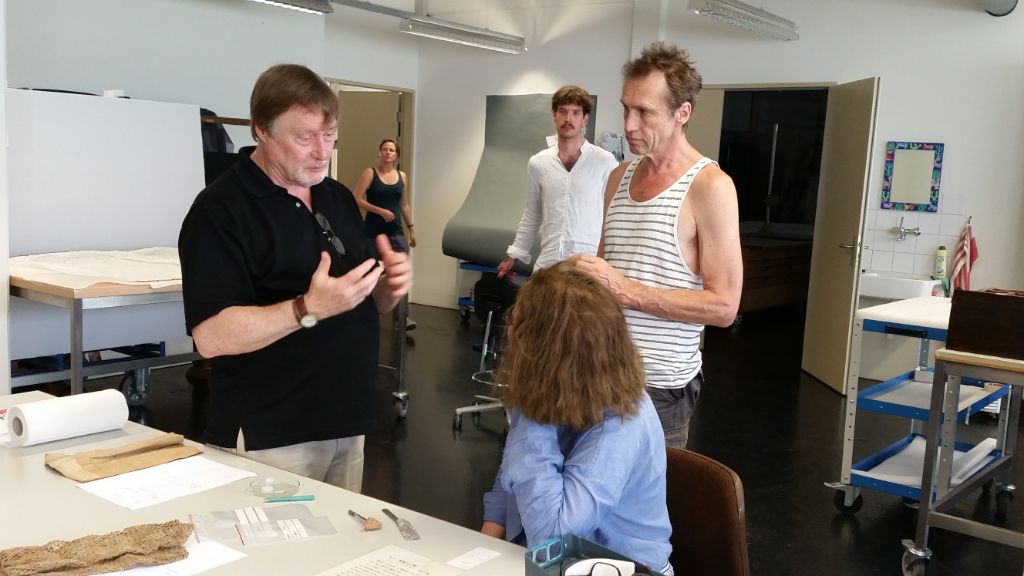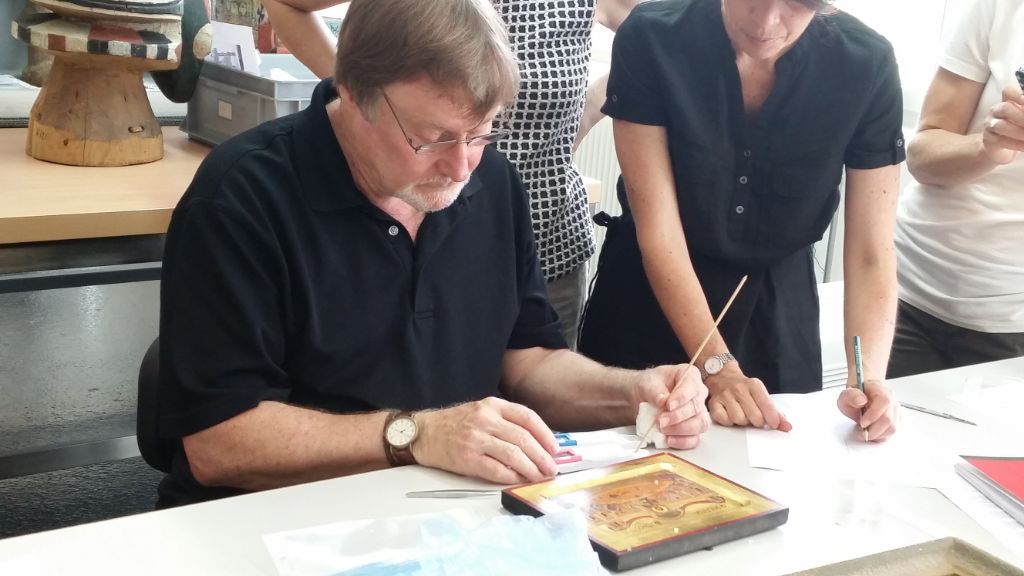Der grüne Professor
Professor Richard Wolbers, Biochemiker und Konservator aus Philadelphia (USA), ist bekannt geworden durch seine Arbeiten zur Gemäldereinigung mit Gelen. Seit Jahren setzt er auf «grüne Chemie». Diese Woche gibt er in unserem Haus sein Wissen an Mitglieder des Schweizerischen Verbandes für Konservierung und Restaurierung SKR weiter.
MKB: Professor Wolbers, how does a biochemist hit on art?
It was in my late 20s, working at the Salk Institute, in La Jolla Ca, for a distinguished Endocrinologist, Roger Guillemin. He was both a scientist, and a humanitarian: he encouraged me to pursue both art and science goals in life. He helped me to get a Master of Fine Arts in Painting. Of course, the combination biochemistry and painting was unusual but proved to be a good combination ultimately for my eventual profession as an art conservator.
As I teach, I learn as well
Why conservator?
I happened to meet the paintings conservator Carl Grimm in my late twenties. He changed my life. He convinced me that the combination was a good one for becoming an art conservator. I went to the University of Delaware and got an additional degree in Art Conservation. I stayed on with the faculty when I graduated, and I have been teaching for 35 years now at the University of Delaware. I enjoy teaching both in the University and in professional development workshops like the one in Basel. Both are challenging in different ways. And as I teach, I learn as well. By listening to other conservators I understand better their needs and where we need new materials developed.

Richard Wolbers likes working in a team
You are luminary for having developed cleaning systems for fine art materials. Can you tell us more about that?
It started 30 years ago. My goal was to better understand the cleaning of fine art, and to hopefully, develop materials and methods that would also ensure the longevity of art and material culture, not simply restore it. This is a tough engineering problem though. We are faced with challenges that «normal» engineers of cleaning systems aren’t. That is, respecting the aesthetics and the physical, chemical nature of the surfaces we deal with. To slow down deterioration, not alter surface chemistry. All of these are incredibly difficult to manage on balance. I’m also interested in «greener» methods for cleaning, as we all are in our daily work and private lives.
I am merely an egineer
People admire you but do they use your methods in their daily work?
More and more. But the acquisition of the materials and methods is slow because conservators are inherently conservative in their adoption of new techniques. They have to be well scrutinized and time tested to be adopted. It takes long to change the inertia of a whole field. And I actually do not see myself as a revolutionary. I am merely an engineer, adapting materials and principles to solve very specific problems. Fortunately many technologies are interested in «greener» methods and materials, and I’m following along after very good models from other endeavours.
How does it feel to have a piece of art in your hands and know you could prolong its life?
There is nothing more satisfying. Art and architecture are the treasures of humanity. I am privileged to have some part in their presentation and preservation

It is always hands on with Richard Wolbers
What were the most amazing pieces of art you worked on?
«The Adoration of the Magi», a small painting by Andrea Mantegna, dated to the middle of the 15th century. It was very difficult but changed my direction of cleaning. It was a pivotal moment.
About three years ago I helped with designing the cleaning system for a chapel in St Sulpice , Paris, decorated and painted by Eugene Delacroix. Whenever I am in Paris now, I go and look at it. It’s a joy to go see, because of the clarity and unity in the cleaning.
You mentioned architecture before. You helped for example preserve the U.S. Capitol. How so?
My career really started with easel painting, but I rapidly went on to painted furniture, decorative objects, mural painting and architecture and became ultimately a mural painting conservator. I enjoy working with teams of conservators, and on projects that are large in scale, and that involve the work of other trades people, i.e., plasterers, carpenters, etc.
I was almost moved to tears
What do you think about our Museum?
On Sunday I wandered in the old city by chance and visited your museum. I did not know then that I would actually be living here for a time and conducting a workshop here. I was stunned – by the building, by the organisation and presentation. I was almost moved to tears: It’s clear that a great deal of thought and energy has gone on to present the collection in the way that it is. It is just amazing.